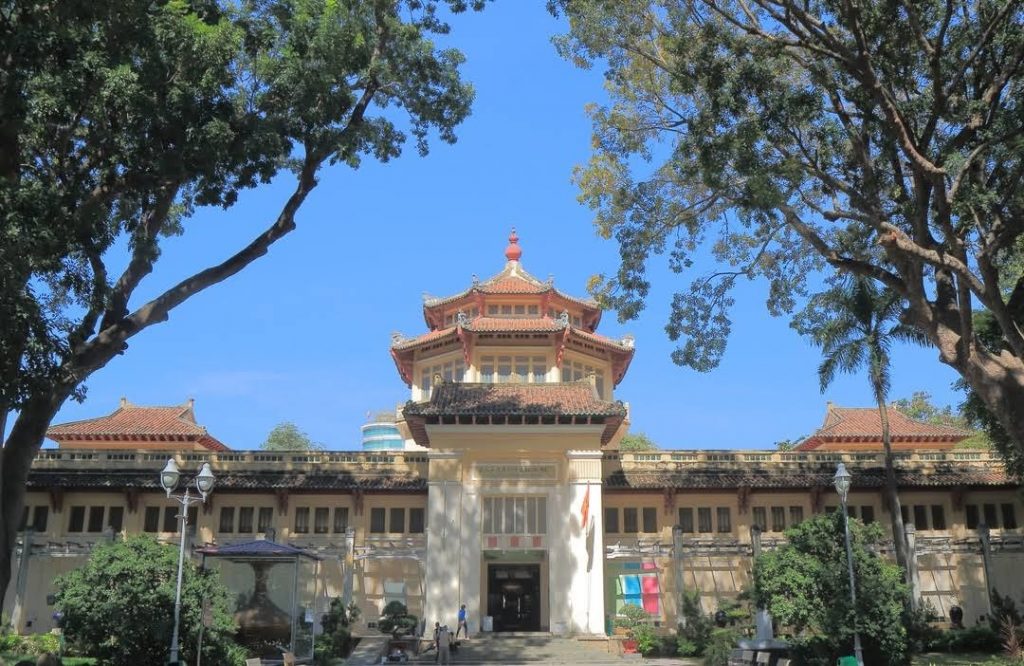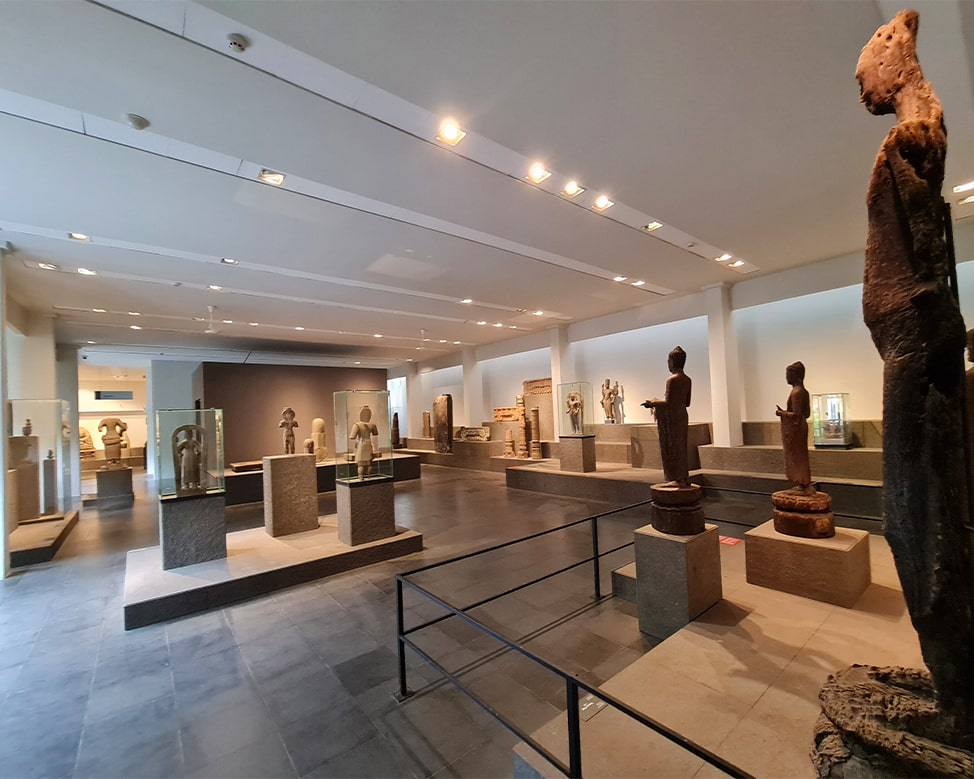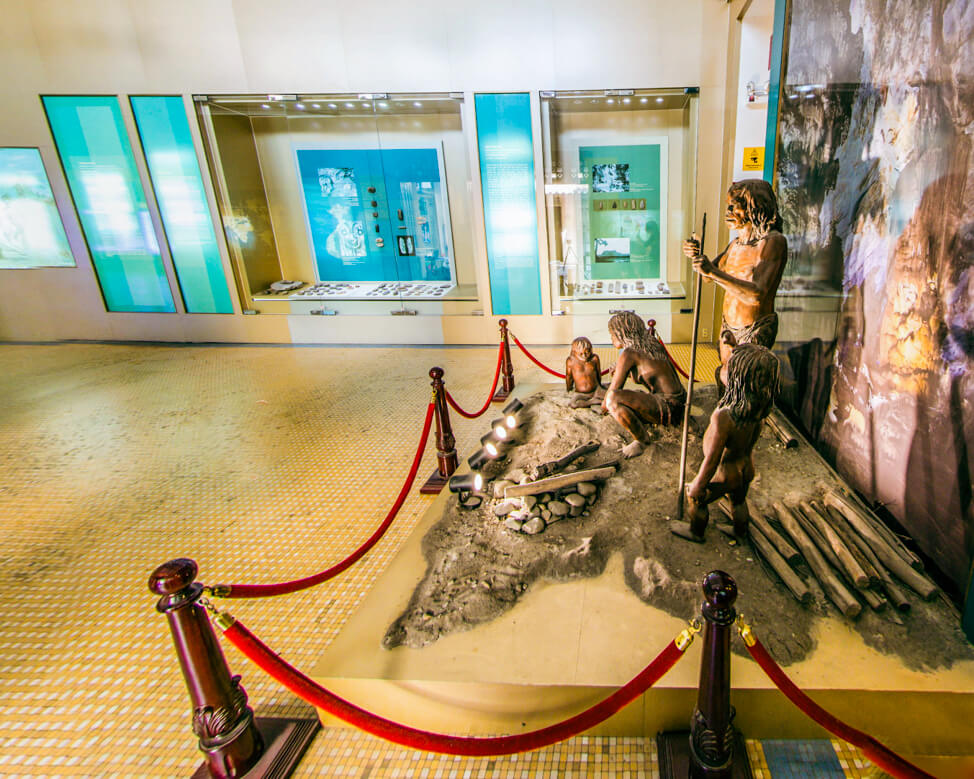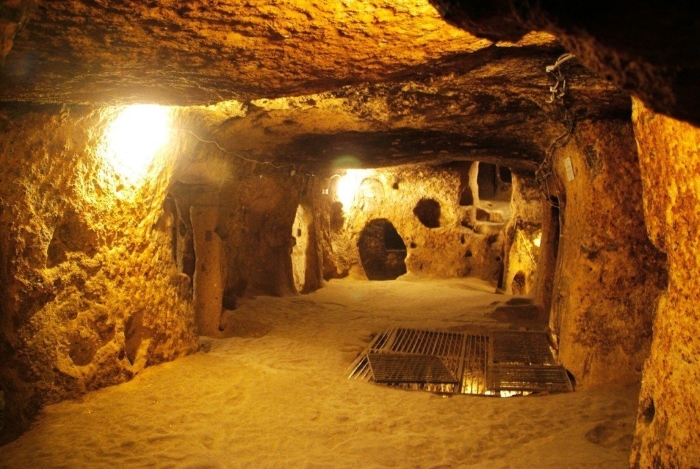The Ho Chi Minh City History Museum is a place that preserves and conserves artifacts related to the formation and development of Vietnam from the prehistoric era to the present day. It also serves as a source of inspiration for historians who come here to visit.
The Vietnam History Museum in Ho Chi Minh City is a must-visit for travelers interested in Vietnamese history. When you visit this place, you will experience the feeling of traveling through different periods in the country’s construction, existence, and development, with over 40,000 historical artifacts on display. Let’s learn more about the Vietnam History Museum in this article!

The address of the Ho Chi Minh City History Museum.
The museum is located at 2 Nguyen Binh Khiem Street, Ben Nghe Ward, District 1. This is the place where tens of thousands of precious artifacts collected from both within and outside the country are preserved and displayed.
Situated in the heart of Saigon, the route to the Ho Chi Minh City History Museum is quite straightforward, and you can use private vehicles, buses, or grab/taxi services.
Bus: For travelers using buses, you can consider routes that pass by the museum such as 05, 06, 14, 56:
- Bus 05, 06 stops at bus stop number 3 on Nguyen Thi Minh Khai Street, which is 230 meters (4 minutes walk) from the museum.
- Bus 14 stops at bus stop number 9 on Nguyen Thi Minh Khai Street, which is 300 meters (6 minutes walk) from the museum.
- Bus 56 stops at stop 2A on Nguyen Huu Canh Street, which is 300 meters (6 minutes walk) from the museum.
Private Vehicles: For travelers using private vehicles, you can park right inside the museum.
Private Car with Driver: If you are an international traveler, traveling with a group, or a family, you can hire a private car with a driver in Ho Chi Minh City to explore the History Museum. Additionally, you can choose to combine your visit with other famous tourist destinations in Ho Chi Minh City, such as Ben Thanh Market, the Ho Chi Minh City Post Office, the Municipal Theater, etc. Therefore, choosing your private transportation from DanangPrivateCar.com’s is a suitable option. Our professional drivers will pick you up at your hotel and take you to various tourist spots, and they will wait for you during your visit at no extra cost.
Ticket Prices for the Ho Chi Minh City History Museum.
Ticket Price: 30,000 VND per person.
The museum offers free admission for the following cases:
- Children under 6 years old.
- People with special disabilities.
- Low-income households.
A 50% discount is available for admission to the Ho Chi Minh City History Museum for the following cases:
- Children under 16 years old.
- Students, pupils.
- Senior citizens: citizens aged 60 and above.
- Other cases, such as veterans of the revolution, labor heroes, etc.
Rules for visiting the Vietnam History Museum in Ho Chi Minh City.
The museum’s opening hours are from 7:30 AM to 5:00 PM, Monday to Sunday. The museum also opens on holidays and special occasions.
Rules:
- Visitors are required to dress appropriately and in a respectful manner.
- Do not bring flammable or explosive materials, weapons, or litter that could pollute the museum while visiting.
- Do not bring food or drinks into the museum, maintain cleanliness, and avoid making noise during the visit.
- Do not touch historical artifacts and equipment, and do not enter rooms not designated for visitors.
The History of the Ho Chi Minh City History Museum.
The museum originally bore the name “Blanchard de la Brosse Museum” (named after the governor of Cochinchina at the time) and was built and established in 1929. It was the first museum in the South with a long history, witnessing the ups and downs in Saigon.

In 1956, the museum was renamed as the “Vietnam National Museum,” exhibiting ancient art from some Asian countries.
On August 23, 1979, the museum officially changed its name to the Ho Chi Minh City History Museum. In 2012, the museum was recognized as a National-level Architectural and Artistic Monument.
The museum serves as a research hub for many experts and individuals interested in exploring the history and culture of Vietnam, as well as the various cultures in the region and around the world. It has a team of knowledgeable and experienced staff.
Visiting the Ho Chi Minh City History Museum.
At present, the museum possesses over 40,000 artifacts originating from various countries and different ethnic groups. The collections encompass the history and culture of Vietnam from ancient times to 1945, as well as unique cultural aspects of the southern region and some other Asian countries.
The museum’s exterior space
The Ho Chi Minh City History Museum has a spacious area of 6,057 square meters and is divided into two buildings: the front building, constructed in 1927, and the rear building, built in 1970. The architectural embellishments of the museum are crafted from various materials such as wood, iron, cement, contributing to a sense of universality and similarity with many other architectural structures.

The front building was originally designed by French architect Auguste Delaval and exudes a venerable charm. It was the initial “Blanchard de la Brosse Museum” and spans an area of 2,100 square meters. The overall architectural style of this building reflects the ancient Indochinese style, with an octagonal central tower serving as a focal point. It plays a vital role as the symmetrical axis for the two adjacent wings of the Ho Chi Minh City History Museum.
Continuing from the front building with a harmonious design, the rear building was designed by Vietnamese architect Nguyen Ba Lang and is in a U-shaped configuration with an area of 1,000 square meters.
The exhibition area inside the Ho Chi Minh City History Museum
When you visit the Ho Chi Minh City History Museum, you will experience a journey through the length of Vietnam’s history, from prehistoric times to the Nguyen Dynasty, as you move through each room. Starting from the earliest traces of ancient Vietnamese stone tools to the weapons of the Hung Kings, the museum showcases valuable artifacts with detailed explanations to provide visitors with a deeper understanding.

Furthermore, the museum displays traditional costumes and musical instruments of ancient ethnic groups, emphasizing not only the historical process but also the rich culture of the Vietnamese people. In contrast to the room above, the museum also exhibits the dead – a panoramic view of life in the past, from birth to adulthood, and ultimately to death.

Not limited to Vietnam alone, the Ho Chi Minh City History Museum also has exhibition areas dedicated to Buddha statues from various Southeast Asian cultures. The upper floor features the artistic exhibition of Champa culture with ancient clay sculptures, altars, and jars, creating a mystical atmosphere.
If you are looking for airport transfer services at Tan Son Nhat International Airport, book a private car service from Tan Son Nhat Airport to the city center now.
Tourist attractions near the Ho Chi Minh City History Museum.
There are several interesting tourist spots near the Ho Chi Minh City History Museum (TPHCM) that you can visit after exploring the museum. Here are some options:
- Saigon Notre-Dame Cathedral Basilica: The cathedral is about a 10-minute walk from the museum. It’s a renowned architectural masterpiece with perfect Gothic architecture and is an iconic religious symbol of the city.
- Independence Palace: Approximately a 15-minute walk from the museum. This site hosted many significant historical events in Vietnam and marks the end of the Vietnam War.
- Ben Thanh Market: Not far from the museum, about a 10-minute walk away. It’s one of the largest and most famous traditional markets in Saigon where you can shop for local specialties and handicrafts.
- Reunification Palace: About a 15-minute walk from the museum. This palace has a crucial historical significance and was where the Vietnam War came to an end.
- Ho Chi Minh City Post Office: About a 10-minute walk from the museum. It’s a beautiful architectural landmark and a common stop for tourists.
- Municipal Theater of Ho Chi Minh City: Approximately a 10-15 minute walk from the museum. This theater is known for its stunning architecture and diverse artistic performances.
These attractions are close to the museum and provide excellent opportunities to explore the unique history, culture, and architecture of Ho Chi Minh City.
The Ho Chi Minh City History Museum is a place that preserves the milestones of history and the tremendous significance of Vietnam’s development. With the detailed information we have provided here, we wish you a smooth and enjoyable visit!



































